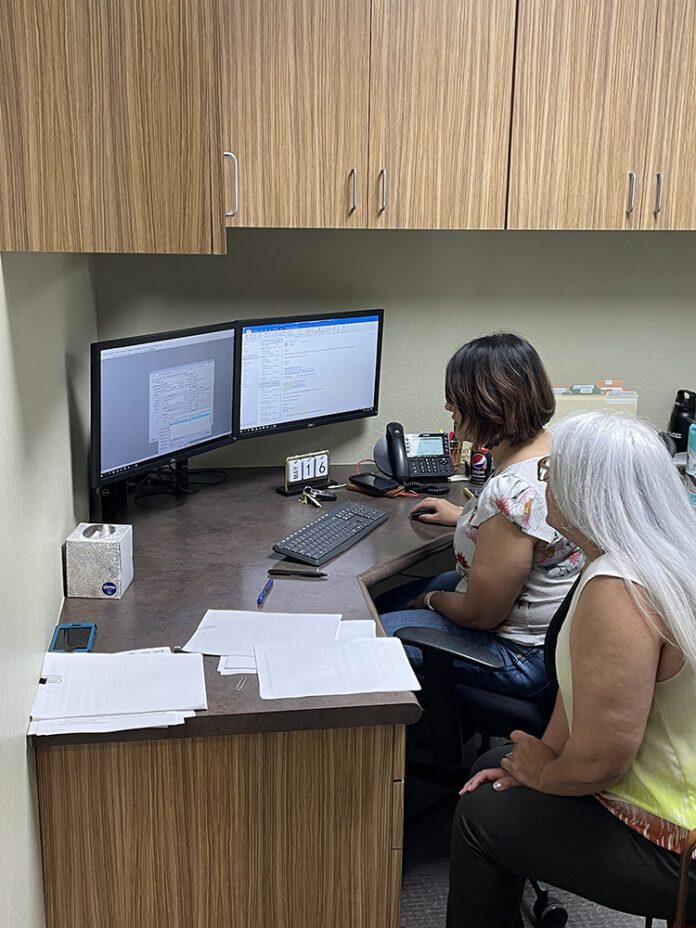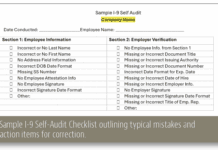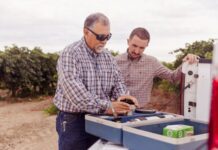
Since 1991, all California employers with 10 or more employees are required to have a written Injury and Illness Prevention Program (IIPP). Even though it has been over 30 years since the regulation went into effect, the IIPP is still one of the most cited violations by Cal/OSHA across all industries including agriculture. The citations under this code vary greatly from not having a plan at all to failing to review it with your employees on a regular basis. The beginning of the new year is a great opportunity to give your safety program time and attention before the season kicks off.
Basic Elements of an IIPP
An effective IIPP improves the safety and health in your workplace and reduces costs through good management and employee involvement. The eight required Injury and Illness Prevention Program elements are:
- Responsibility: This section identifies who in your operation has the authority and responsibility for implementing the provisions of the IIPP.
- Compliance: This component outlines the system that ensures all workers comply with the rules for maintaining a safe work environment.
- Communication: This element captures the plan for facilitating a continuous flow of two-way communication between management, supervisors and employees.
- Hazard Assessment: Periodic inspections of the workplace are essential to evaluating and reevaluating safety concerns; this section outlines the formalized plan for timely assessments.
- Accident/Exposure Investigation: This section identifies the actions to be taken in the case of an actual incident or near-miss to help identify the root cause and then take corrective action.
- Hazard Correction: This component identifies the process for correcting unsafe or unhealthy workplace conditions, practices or procedures.
- Training and Instruction: As with any plan, there needs to be training to aid in implementation. This element provides details as to who, when and what needs to be trained.
- Recordkeeping: This section outlines documentation requirements.
To be effective, your IIPP must address the following areas:
- Fully involve all employees, supervisors and management.
- Identify the specific workplace hazards to which employees may be exposed.
- Correct identified hazards in an appropriate and timely manner.
- Provide effective training.
For useful tools in creating or updating your IIPP, take advantage of Cal/OSHA’s IIPP e-tool at www.dir.ca.gov/dosh/etools/09-031/how.htm.
Heat Illness Prevention Plan
The employer must develop, put in writing and implement effective procedures for complying with the requirements of T8 CCR 3395, the Heat Illness Prevention Plan (HIPP). Each company needs to have a written heat illness prevention plan at the worksite that contains the following elements and includes specific details as to how you will ensure that the provisions are met:
- The designated person(s) that have the authority and responsibility for implementing the plan in the field.
- Procedures for providing sufficient water.
- Procedures for providing access to shade.
- High-heat procedures.
- Emergency response procedures (don’t forget your lone workers, e.g., irrigators).
- Acclimatization methods and procedures.
When drafting your plan, it is important to consider the size of your crew, the length of the work day, the ambient temperatures and any additional personal protective equipment (PPE) that contributes as an additional source of heat. The plan needs to be in English and also the language understood by the majority of the employees. Like the IIPP, Cal/OSHA has an HIPP e-tool to assist with drafting your program: www.dir.ca.gov/dosh/etools/08-006/index.htm.
COVID-19 Prevention Plan
Employers are also required to have a COVID-19 Prevention Plan included in their IIPP or as a standalone safety program until Feb. 3, 2025. The elements of your plan should include the following:
- Determine measures to prevent COVID-19 transmission and identify and correct COVID-19 hazards.
- Provide COVID-19 training to employees.
- Investigate and respond to COVID-19 cases in the workplace.
- Exclude from the workplace COVID-19 cases until they meet return to work criteria and implement effective policies to prevent transmission after close contact.
- Make testing available at no cost to employees.
During an outbreak make COVID-19 testing available to all employees within the exposed group.
- Notify employees who had close contact in the workplace.
- Require and provide face coverings and respirators in the manner and in the circumstances specified in the COVID-19 Prevention regulations.
- Advise employees they can wear face coverings at work regardless of their vaccination status, and that retaliation by the employer is illegal.
- Improve indoor ventilation and air filtration to prevent COVID-19 transmission.
- Require respiratory protection during aerosolizing procedures.
- Keep records of COVID-19 cases at the workplace.
- Maintain records of COVID-19 cases, and report serious illnesses and outbreaks to Cal/OSHA and to the local health department when required.
Cal/OSHA has posted Model COVID-19 Prevention policies and procedures on its website for employers to use.
Coming Soon: Workplace Violence Prevention Program
By July 1, 2024, employers must develop a written program addressing workplace violence prevention. Just as the case with the other required programs, Cal/OSHA will be providing a model program which employers can utilize. It is anticipated this model program will be available this spring in advance of the July 2024 program implementation requirement.
Reminders
It is important to develop an IIPP that fits the unique needs of your operation. When including specifics in your plan, ensure you can meet those benchmarks and appropriate documentation is occurring. Cal/OSHA will cite an operation based on what was included in their IIPP and review your training records. Additionally, make sure to review programs with your team annually and make it available upon request. If you should need assistance with creating or implementing any of your safety programs, please connect with our team via email at safeinfo@agsafe.org or call (209) 526-4400.
AgSafe is a 501c3 nonprofit providing training, education, outreach and tools in the areas of worker safety, human resources, labor relations and pesticide safety issues for the agricultural community. Since 1991, AgSafe has educated over 100,000 employers, supervisors and workers on these critical issues.











